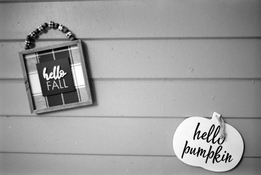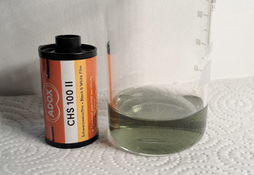Can you clarify what the liquid in question, Matt, is. I assume it's the developer but I may be wrong in that assumption?
Thanks
pentaxuser
The most important liquid of all - water - also plays a role - particularly due to variation in ph.
Can you clarify what the liquid in question, Matt, is. I assume it's the developer but I may be wrong in that assumption?
Thanks
pentaxuser




The most important liquid of all - water - also plays a role - particularly due to variation in ph.
In principle, I completely agree with you. I suppose most people here would choose a film and processing combination for a specific purpose or vibe to suit their creative choice. Having said that, when I set out to test this film, I had to choose a set of widely known and accepted criteria so that the results of the tests would be generalizable. If I just said, "hey, this is a punchy film" without any familiar frame of reference, such a statement would be meaningless, as it would just be an opinion.Another one shot at ISO 200. The darker foreground area is shadow from the pier I am standing on.
Everyone as their own taste, but for me I would use this film to embrace its contrasty vibe. I don't see the point in fighting it to make it something it is not.
IMO - remember IMO! - just use a different film if you want wider exposure latitudes etc. There are so many out there - cheaper than Catlabs - that for actual use why wrestle with this one if that is the result you want?
It's not about seeing what can be done, it's about seeing how the film responds to exposure and development within a broadly accepted frame of reference. After that, it's up to the photographer to decide what they do with it.I understand it is cool to see what can be done, but after that?
This is a very good point. Is Catlabs using a pH indicator? Is that why the color changes? Do we know of any indicators that change color from gunmetal grey to yellow? Perhaps a chemist can chime in and help us understand what might be going on.Surely water by itself in terms of its acidity or alkalinity cannot be the sole reason and maybe not the main reason?
I don't think this thread is about seeing what can be done with the film, but rather trying to figure out what it is, i.e. its speed and spectral performance, in light of the fact that the marketer of this film has not disclosed that rather useful information. (Neither did Ferrania, but I don't recall anyone digging in like @aparat has done here to figure out the mystery of P30.) Without this thread we wouldn't know that this Catlabs film is a sub-100 ISO film no matter what the marketer says.I understand it is cool to see what can be done, but after that?
Thanks for sharing the flag image! Here is a wet print I made while experimenting with P30. See what it does to the flag?


Thanks for sharing the flag image! Here is a wet print I made while experimenting with P30. See what it does to the flag?

Thanks for sharing the flag image! Here is a wet print I made while experimenting with P30. See what it does to the flag?

Yes!, and in lieu of that a simple “experiment “ as was done in post 251 gives good clues.it seems to me that it is a good example of the case for a spectral sensitivity curve or information to be provided so users can determine where an appropriate filter is necessary
Yes!, and in lieu of that a simple “experiment “ as was done in post 251 gives good clues.

Thanks!It's a gorgeous print, with beautiful tonality all the way through. As to the flag, wow!
I found P30 was useful for exactly those sort of scenes as well. If you have dim lighting or overcast conditions, P30 and Catlabs 320 would both offer useful contrast if you don't mind the slow speed..... nice separation in dull, low-contrast scenes. These two were taken in deep shade, wide-open at f/2.8 1/60s. I really like the (unmanipulated) contrast here.

Seriously, it's such fun. Get one!I gotta get me a darkroom!
LOL… it’s easy to lose information between the two threads and the volume of posts in each. Best view of the colour was in Pentaxuser’s video recommendation. I think this will get you there

CatLABS X FILM 320 Pro now available in 35mm and 120
It's interesting, I took BrianShaw's response to Dwight's comment as being more directed to the thread in general, not Dwight in particular. Wearing my moderator hat for a brief moment here - a suggestion to everyone to pause before you assume the worst about a post. Without the benefit of...www.photrio.com
But what would be the logic of an indicator dye built in to a film?
So water is the key particularly due to a variation in ph. If this accounts for a different colour in the post development liquid then I'd have expected users to report such differences to a much greater extent than they seem to
 .
.I will try to add some alkali to that diluted dye next time I process a roll. Has anyone taken a picture of the yellow dye? I've tried to find it in the other thread but failed.
I love it! Everything works here, from location to composition, to tonality. I don't even mind the streaks. Could you reveal the part of the world this is?
The only picture I have seen of this yellow colour is in the video which I posted in the original CatLABs thread
Here's the video and the colour is at 10: 50 mins
pentaxuser

Thanks! Taken by Palos Verdes Estates, which is next to Redondo Beach just south of Los Angeles.
| Photrio.com contains affiliate links to products. We may receive a commission for purchases made through these links. To read our full affiliate disclosure statement please click Here. |
PHOTRIO PARTNERS EQUALLY FUNDING OUR COMMUNITY:  |